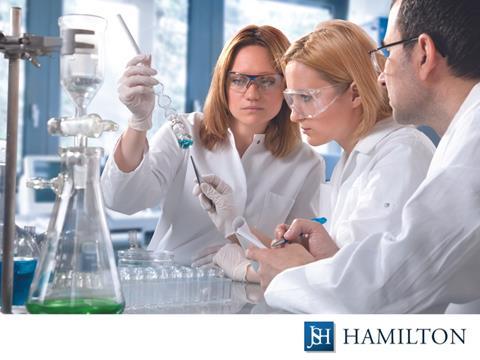
J.S. Hamilton Poland is a ‘leading’ European testing laboratory with ‘state-of-the-art’ analytical devices and a team of experts with experience in the safety and compliance evaluation of food packaging. In this edition of The Spotlight, the company underlines the importance of screening and certifying food-safe packaging for industrial use.
Food safety is the main driver for the development of modern packaging – especially nowadays, due to global discussion about the circular economy.
The basic task of packaging is to efficiently protect food against its external surroundings, especially from chemical and microbiological contamination, oxygen and water vapor diffusion, or light penetration. It is essential for extending the shelf-life of packaged food and preventing food waste as consequence.
But food packaging causes growing issues due to its high production volume, disposability, problems with waste management, and negative impact on our environment. Reduction, reuse, recycling, and biodegradability topics, as well as packaging redesign, strongly support the goals of the circular economy.
However, recycling may increase the levels of unforeseen and potentially hazardous chemicals in the packaging material, and therefore too-high migration into food. Since exposure to certain chemicals migrating from food packaging can cause serious health risks, like chronic diseases, it is necessary to assess the safety and quality of packaging.

It is often a great challenge for producers to use innovative raw materials, coatings, and post-consumer recycling additives to produce more and more ecological and safe packaging. Such modern packaging should be recyclable or contain recycled material, without having a negative impact on the environment, while ensuring that it is food-safe and compliant with relevant regulations for food contact materials (FCMs) and articles (FCAs). That’s why the hot topic is the safety of non-intentionally added substances (NIAS) as migration from food packaging.
Moreover, most of the chemicals migrating from food packaging are unknown. Most of them are impurities and reaction products, oligomers, by-products, and degradation products of additives. That’s why packaging producers need reliable partners who will support them in this task.
To ensure that packaging is in line with EU food safety regulations, Regulation (EC) No 1935/2004 and Commission Regulation (EU) No 10/2011, as well as special Brand Owners’ requirements, both target and non-target analyses are of critical importance.
To cover a wide range of NIAS, several screening techniques are necessary. In order to include organic/non-organic, polar/non-polar, volatile/non-volatile, or metallic/non-metallic substances, we use the following screening methods to guarantee reliable safety evaluation:
- LC-QToF-MS
- GC-MS/FID and GC/MS
- Headspace-GC/MS
- ICP-MS
- Primary aromatic amines (PAAs)
- Mineral oils (MOSH, POSH and MOAH)
- Targeted analyses of specific substances – monomers and functional additives, catalysts and production aids (SMLs)
- Targeted analyses of substances of special concern, like bisphenols, phthalates, SCCP/MCCP, photoinitiators and acrylates

The identification of detected NIAS is done using databases, relevant literature, in-house knowledge, and available data concerning the starting materials. Risk assessments of detected NIAS are generally performed using available toxicology data, existing restrictions, scientists’ opinions, and the TTC-approach (Threshold of Toxicological Concern), recommended by EFSA and organizations, like ILSI, EuPIA, Cefic FCA, or FoodDrinkEurope.
Additionally, we propose our very special tool, the “Food SAFE” certification scheme, to prove and communicate to your clients that your product is unique; that safety and compliance verification is under the control of experts in this field.
Contact us to find out more.
This content was sponsored by J.S. Hamilton Poland.












